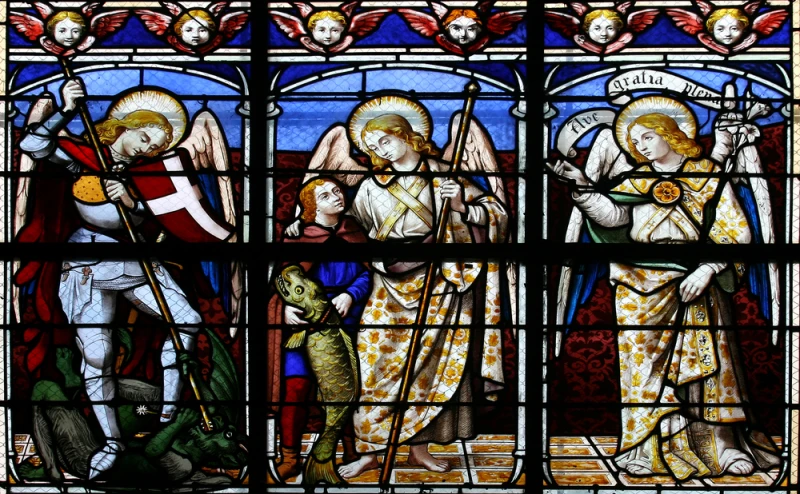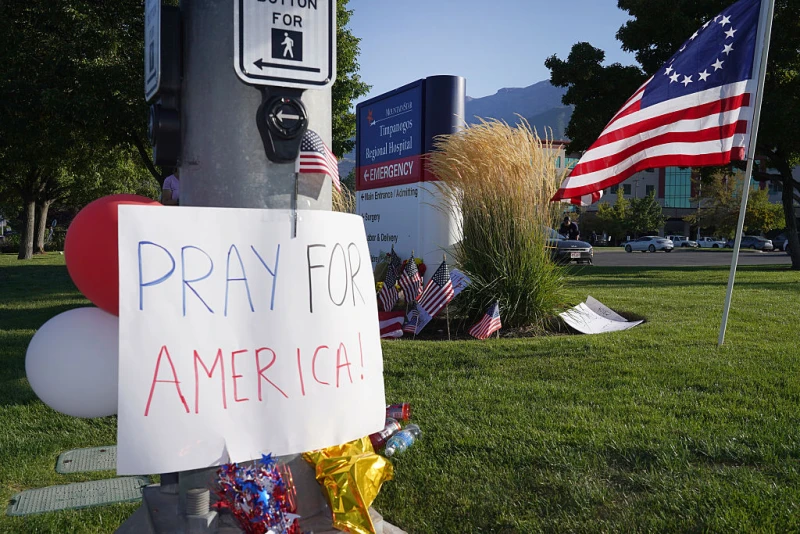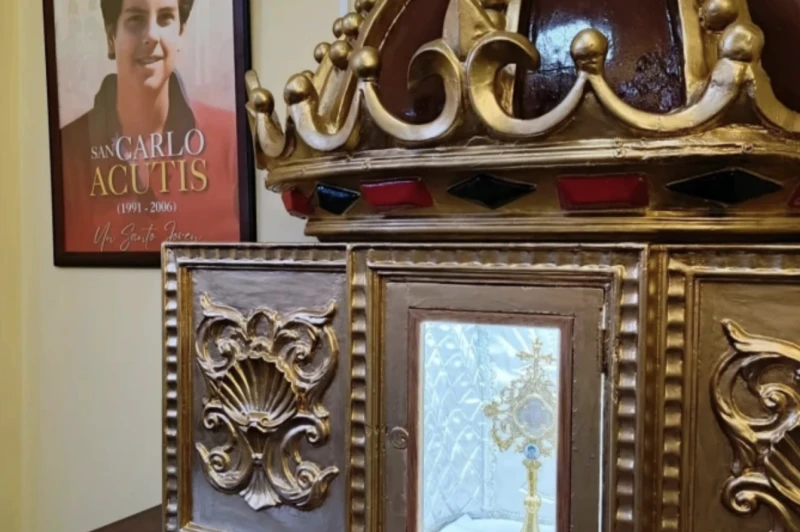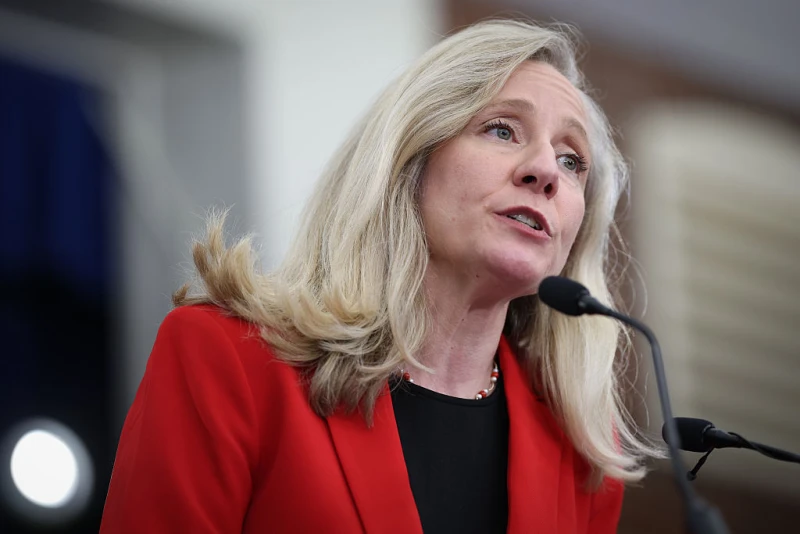

A stained-glass window in St. Sulpice Church in Fougeres, France, depicts (from left to right) the archangels Michael, Raphael, and Gabriel. / Credit: Tiberiu Stan/Shutterstock
CNA Staff, Sep 29, 2025 / 04:00 am (CNA).
Many Catholics can, at the drop of a hat, recite the prayer to St. Michael the Archangel — the famous petition to that venerable saint to “defend us in battle” and “cast into hell Satan.”
In the culture of the Church, Michael is often accompanied by his two fellow archangels — Sts. Gabriel and Raphael — with the three forming a phalanx of protection, healing, and petition for those who ask for their intercession. The Church celebrates the three archangels with a joint feast day on Sept. 29.
St. Michael the Archangel
St. Michael the Archangel is hailed in the Book of Daniel as “the great prince who has charge of [God’s] people.”
Michael Aquilina, the executive vice president and trustee of the St. Paul Center for Biblical Theology in Steubenville, Ohio, described Michael among angels as “the one most often named — and most often invoked — and most often seen in history-changing apparitions.”
Devotion to Michael, Aquilina told CNA, “has been with the Church from the beginning. And Michael has been with God’s people since before the beginning of the Church.”
Michael’s history in the Bible is depicted through Daniel, in Jude (in which he battles Satan for possession of Moses’ body), and in Revelation as he “wag[es] war with the dragon” alongside his fellow angels.
Michael, Aquilina said, was “a supremely important character who was there from the beginning of the story.” Rabbinic tradition holds that Michael was at the center of many of the great biblical dramas even if not explicitly mentioned.
He was an early subject of veneration in the Church, though Aquilina noted that the Reformation led to a steep decline in devotion to the angels — until the end of the 19th century, when Michael began an “amazing comeback journey” in the life of the Church.
Following a vision of Satan “running riot” on the planet, “Pope Leo composed three prayers to St. Michael, ranging from short to long,” Aquilina said. “The brief one, he commanded, should be prayed at the end of every Mass.”
This was a regular feature of the Mass until the Vatican II era, after which it came to an end — though Pope John Paul II in 1994 urged Catholics to make the prayer a regular part of their lives.
“St. Michael is there for us in the day of battle, which is every day,” Aquilina said.
The St. Michael Prayer: St. Michael the Archangel, defend us in battle. Be our protection against the wickedness and snares of the devil / May God rebuke him, we humbly pray / And do thou, O Prince of the Heavenly Host, by the divine power of God, cast into hell Satan and all the evil spirits who prowl about the world seeking the ruin of souls. Amen.
St. Gabriel the Archangel
Gabriel appears regularly in Scripture as a messenger of God’s word, both in the Old and New Testaments. Daniel identifies Gabriel as a “man” who came “to give [him] insight and understanding,” relaying prophetic answers to Daniel’s entreaties to God.
In the New Testament, Luke relays Gabriel’s appearances to both Zechariah and the Virgin Mary. At the former, he informs the priest that his wife, Elizabeth, will soon conceive a child; at the latter he informs Mary herself that she will do the same. The two children in question, of course, were respectively John the Baptist and Jesus Christ.
Christian tradition further associates Gabriel with the apostle Paul’s reference in his First Letter to the Thessalonians to the “archangel’s call” and “the sound of the trumpet of God.”
“Judgment will begin with the archangel’s call and the sound of the horn,” Aquilina told CNA. “Thus we hear often of Gabriel’s trumpet.”
Media workers in particular have “good professional reasons to go to Gabriel,” Aquilina said.
“Since he is the Bible’s great communicator — the great teller of good news — he is the natural patron of broadcasters and all those who work in electronic media,” he said.
“For the same reason, he’s the patron saint of preachers … but also of postal workers, diplomats, and messengers.”
The St. Gabriel Prayer: O Blessed Archangel Gabriel, we beseech thee, do thou intercede for us at the throne of divine mercy in our present necessities, that as thou didst announce to Mary the mystery of the Incarnation, so through thy prayers and patronage in heaven we may obtain the benefits of the same, and sing the praise of God forever in the land of the living. Amen.
St. Raphael the Archangel
Lesser-known among the three great archangels, Raphael’s mission from God “is not obvious to the casual reader” of the Bible, Aquilina said. Yet his story, depicted in the Book of Tobit, is “something unique in the whole Bible.” In other depictions of angels, they come to Earth only briefly, to deliver a message or to help God’s favored people in some way.
“Raphael is different,” Aquilina said. “He stays around for the whole story, and by the end he’s become something more than an angel … he’s become a friend.”
In Tobit, Raphael accompanies Tobias, the son of the book’s namesake, as he travels to retrieve money left by his father in another town, helping him along the way and arranging for his marriage to Sarah.
The biblical account “has in every generation provided insight and consolation to the devout,” Aquilina said.
Notably, Raphael deftly uses the natural world to work God’s miracles: “What we would ordinarily call catastrophes — blindness, multiple widowhood, destitution, estrangement — all these become providential channels of grace by the time the threads of the story are all wound up in the end.”
“Raphael is patron of many kinds of people,” Aquilina said. “Of course, he’s the patron of singles in search of a mate — and those in search of a friend. He is the patron of pharmacists because he provided the salve of healing. He is a patron for anyone in search of a cure.”
He is also the patron saint of blind people, travelers, sick people, and youth.
“Raphael’s story,” Aquilina said, “remains a model for those who would enjoy the friendship of the angels.”
Prayer to St. Raphael: St. Raphael, of the glorious seven who stand before the throne of him who lives and reigns, angel of health, the Lord has filled your hand with balm from heaven to soothe or cure our pains. Heal or cure the victim of disease. And guide our steps when doubtful of our ways. Amen.
This story was first published on Sept. 29, 2023, and has been updated.
Read More








